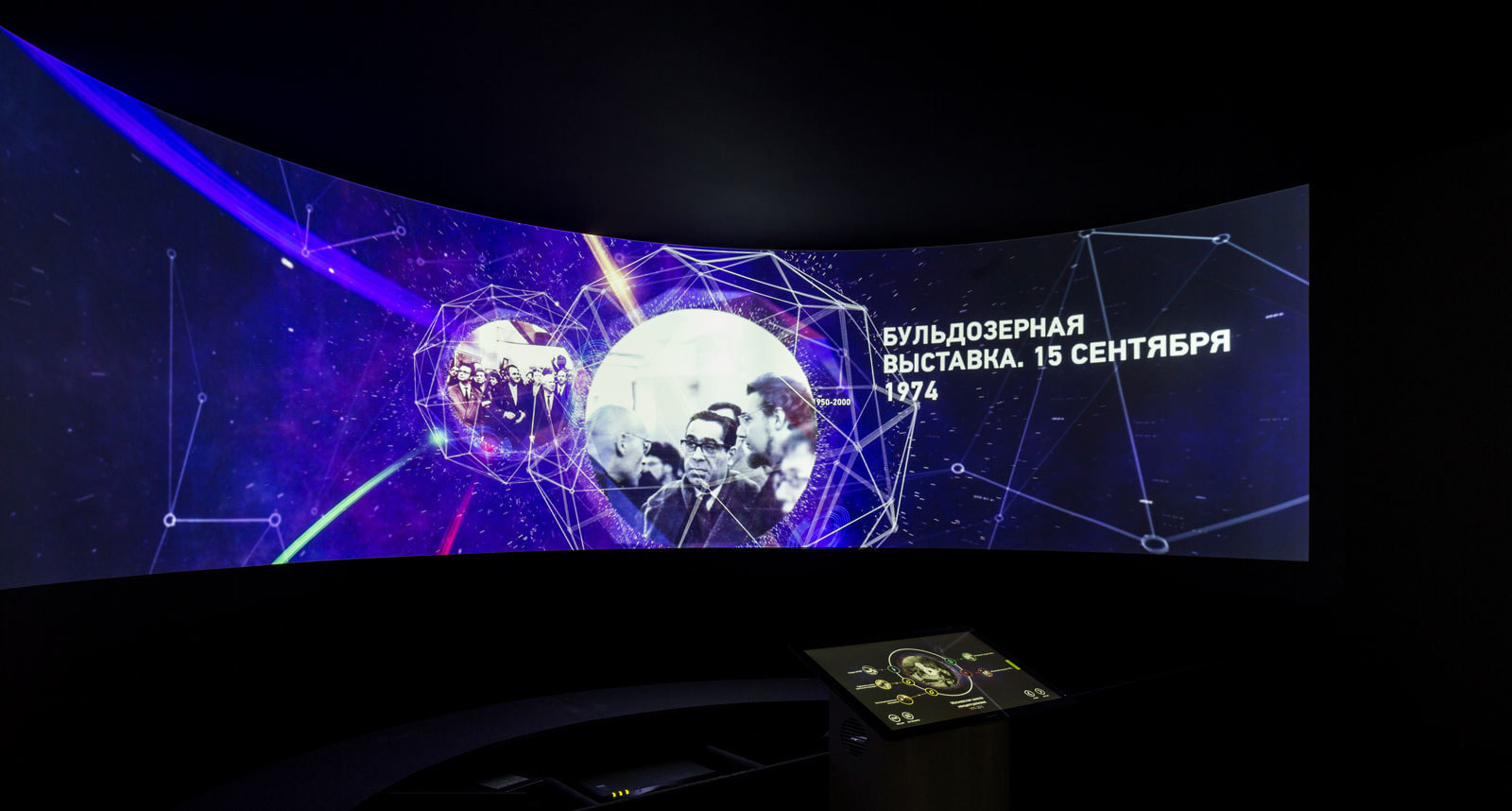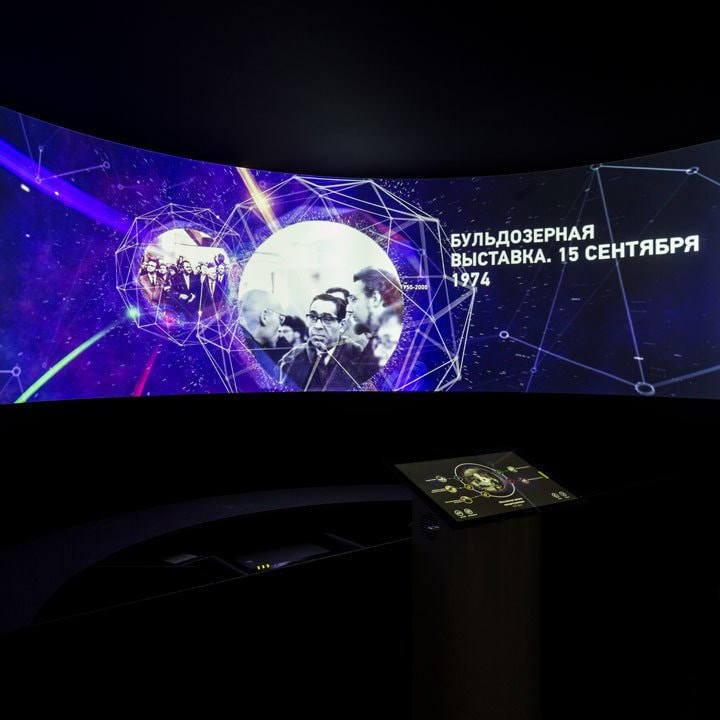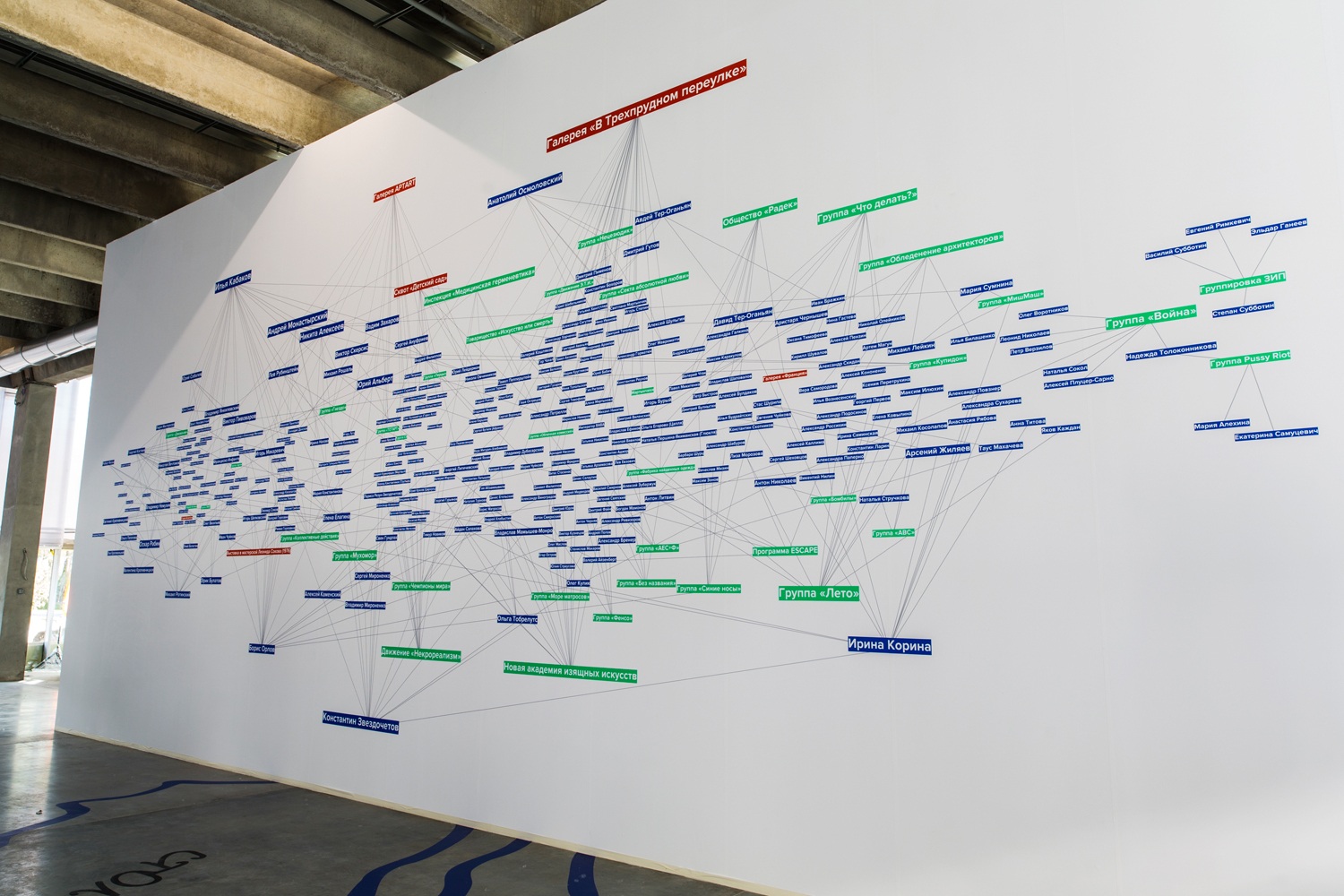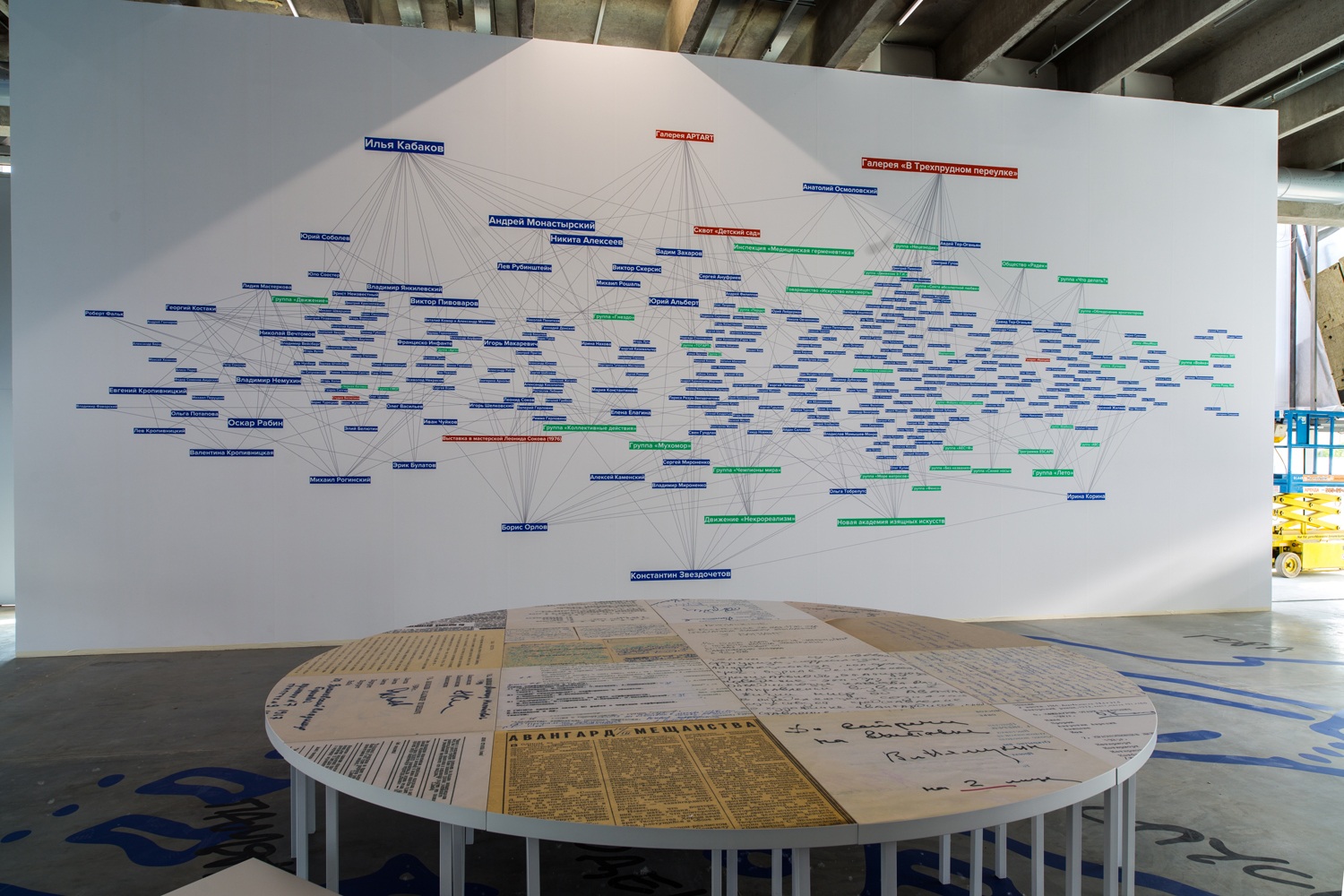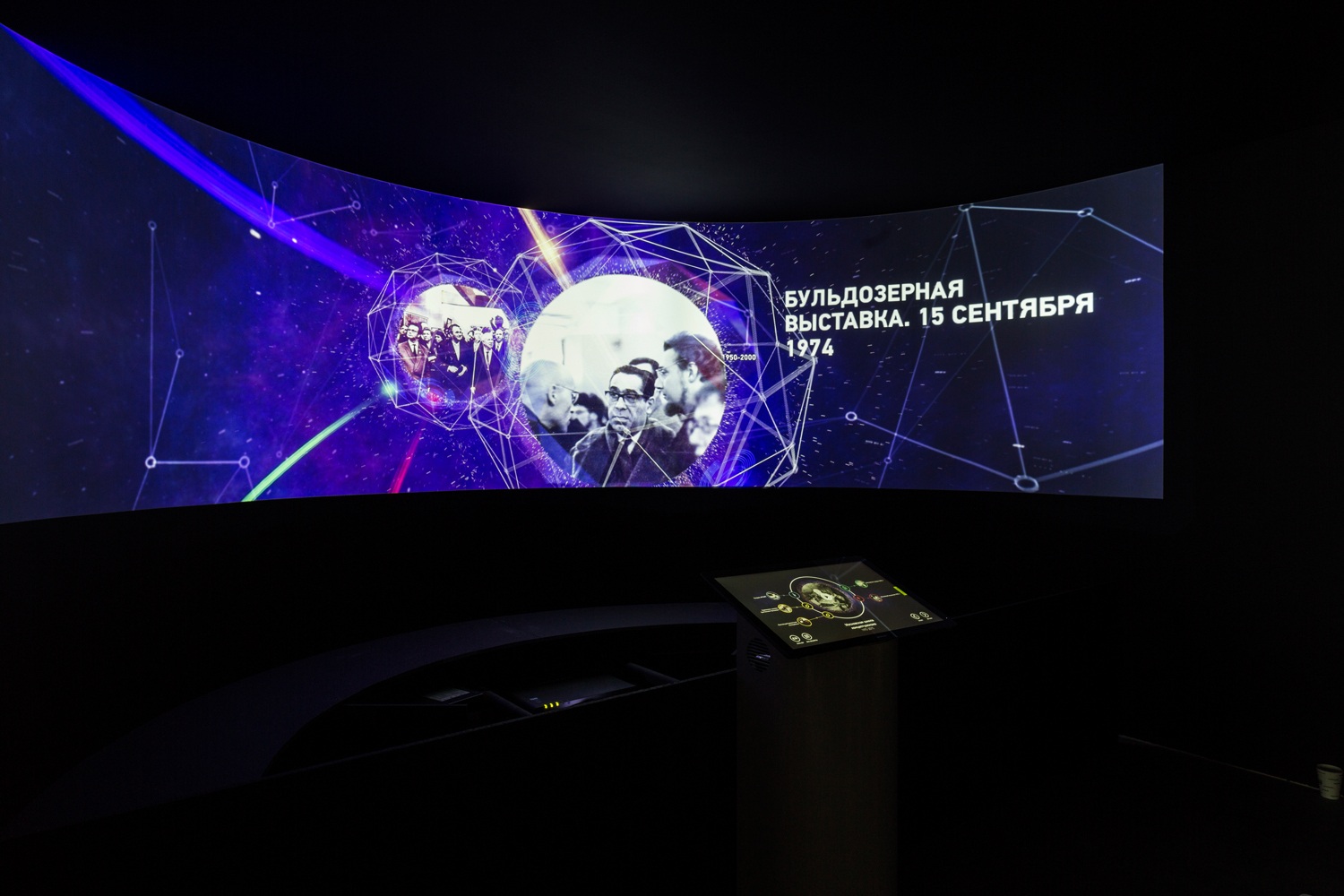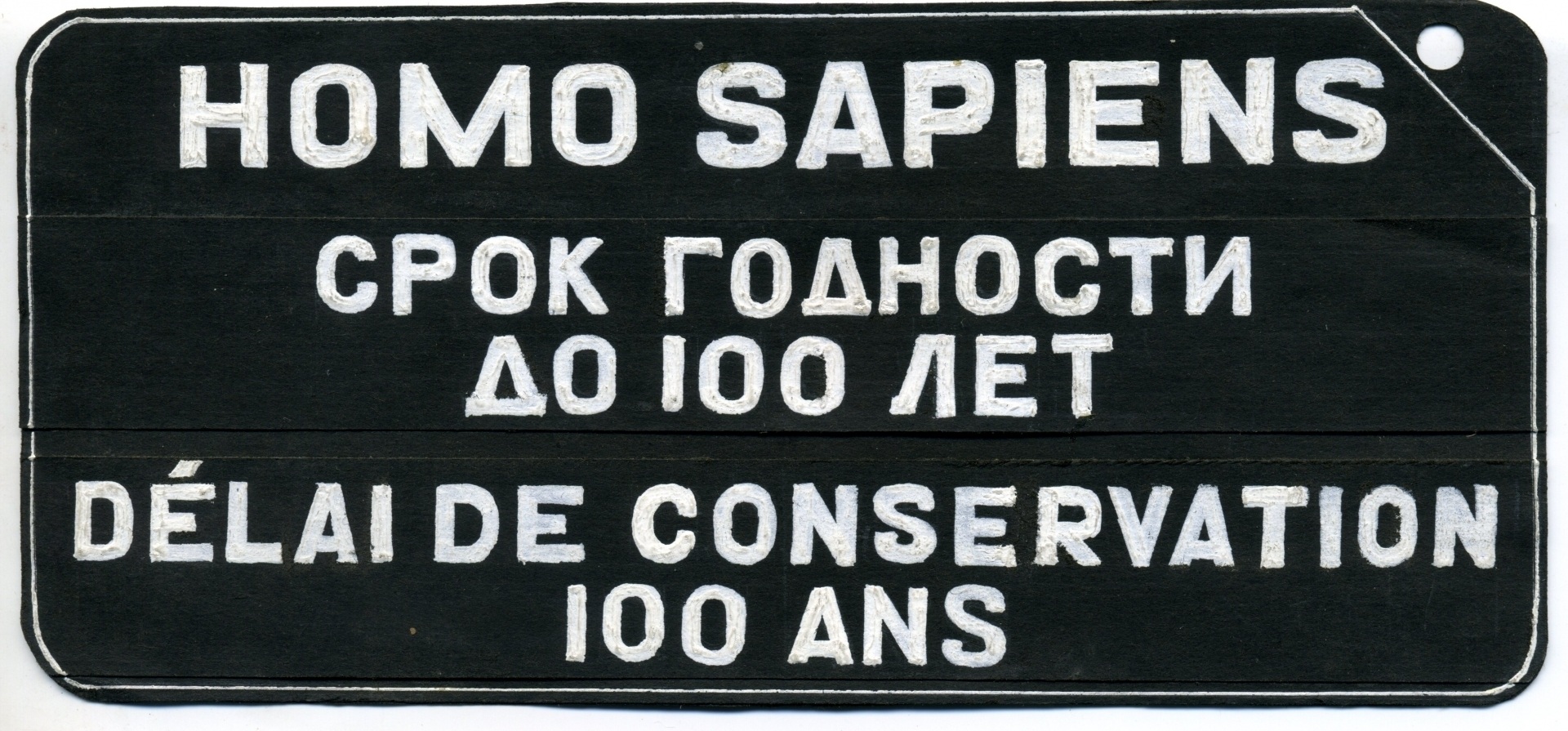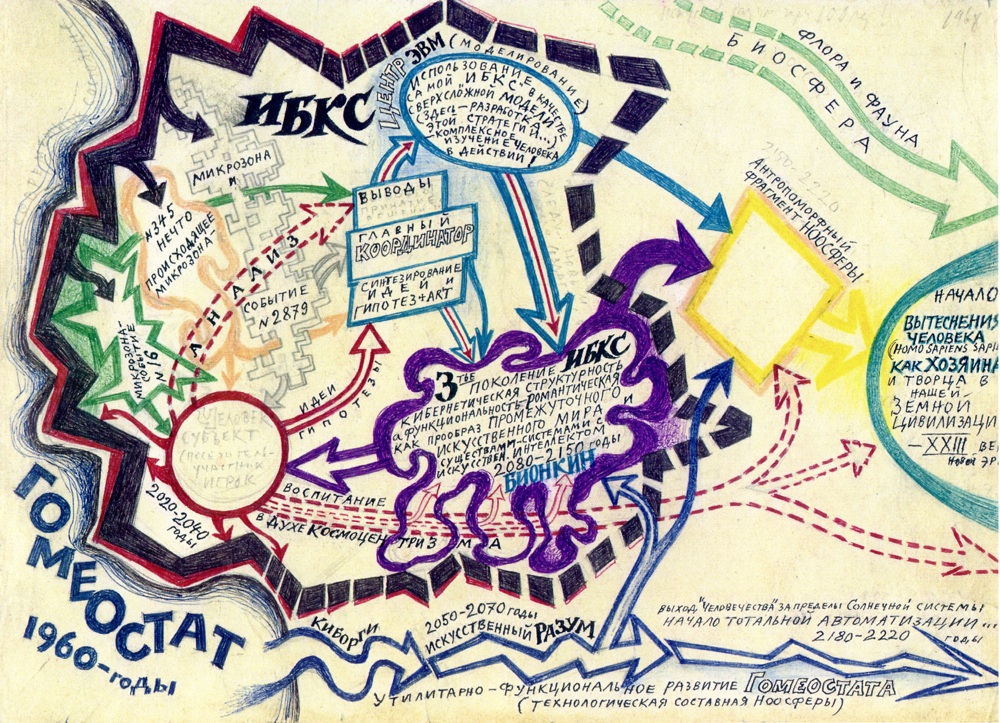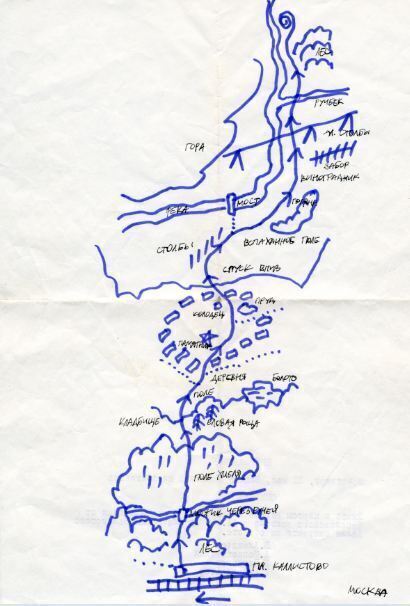The Family Tree of Russian Contemporary Art is a long-term research initiative by Garage Archive Collection. It is intended as a framework though which to develop the yet-to-be-written history of Russian art from the mid 20th century on.
The project consists of a series of closed-door roundtable discussions between specialists, an interactive installation and exhibition of documents, a program of public discussions and a screening program. Revealing the network of connections within the artistic community, the initiative pinpoints the key figures, events and phenomena of post-war art in Russia.
The branches of The Family Tree of Russian Contemporary Art consist of artists, poets, philosophers, musicians, art groups, seminal exhibitions and important exhibition spaces, each surrounded with a host of professional and personal connections. The Family Tree finds its roots in the nonconformist art of the 1960s, nurtured by the soil of the Russian avant-garde of the 1910s-1920s. The key figures and events of the era—from Ilya Kabakov and the Lianozovo Group to Anatoly Osmolovsky and Collective Actions; from the Bulldozer Exhibition to the street performances of the 1990s—will appear in a new coordinate system, where the importance of each element will be determined by the degree of its involvement in the artistic life of the time, All connections in the Family Tree are explained and commented on, and supported with evidence and documentation, particularly through an analysis of sources from Garage Archive—such as films, newspapers, memoirs, and interviews—that give evidence of the influences and collaborations, friendship and family ties, teacher-pupil relations, and shared projects that unite the participants of this history.
The Family Tree of Russian Contemporary Art has been conceived as collaborative endeavor, with sociologists and art historians complementing or questioning each other’s approaches to tracing the history of Russian art. Over the last six months, a team of researchers has started developing the tree model, adding details and checking connections, expanding its roots, trunk, and branches, with a view to expanding the research throughout the exhibition, gaining feedback from Garage audiences, as well as artists and specialists who view the show.
For the opening of the new Garage building, the initial presentation of the Family Tree project will exhibit many artefacts from Garage Archive Collection for the first time, including unique documents and pieces from the archive of famous Russian collector Leonid Talochkin, who founded his collection in the 1960s.
Launching this first public phase of the project, on May 28, Garage will host a seminar where Moscow’s leading art historians and sociologists—experts in the analysis of social connections in art—will discuss the potential of such interdisciplinary collaborations.
Throughout the summer, The Family Tree of Russian Contemporary Art will also be complemented by a series of talks on the key figures in Russian contemporary art from the 1960s to the 2000s and meetings with young Russian artists.
The Family Tree of Contemporary Russian Art is organized by Sasha Obukhova, Head of Garage Archive Collection.
